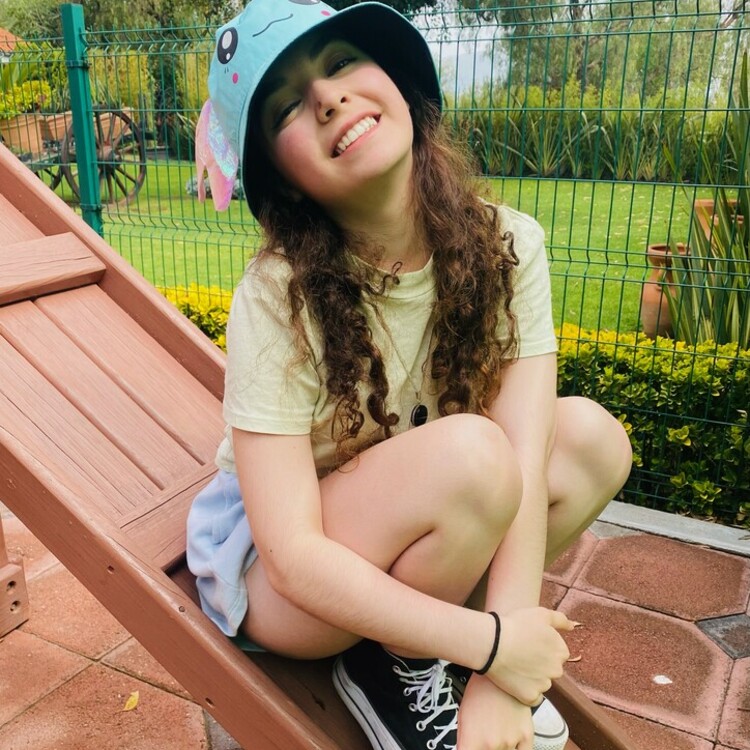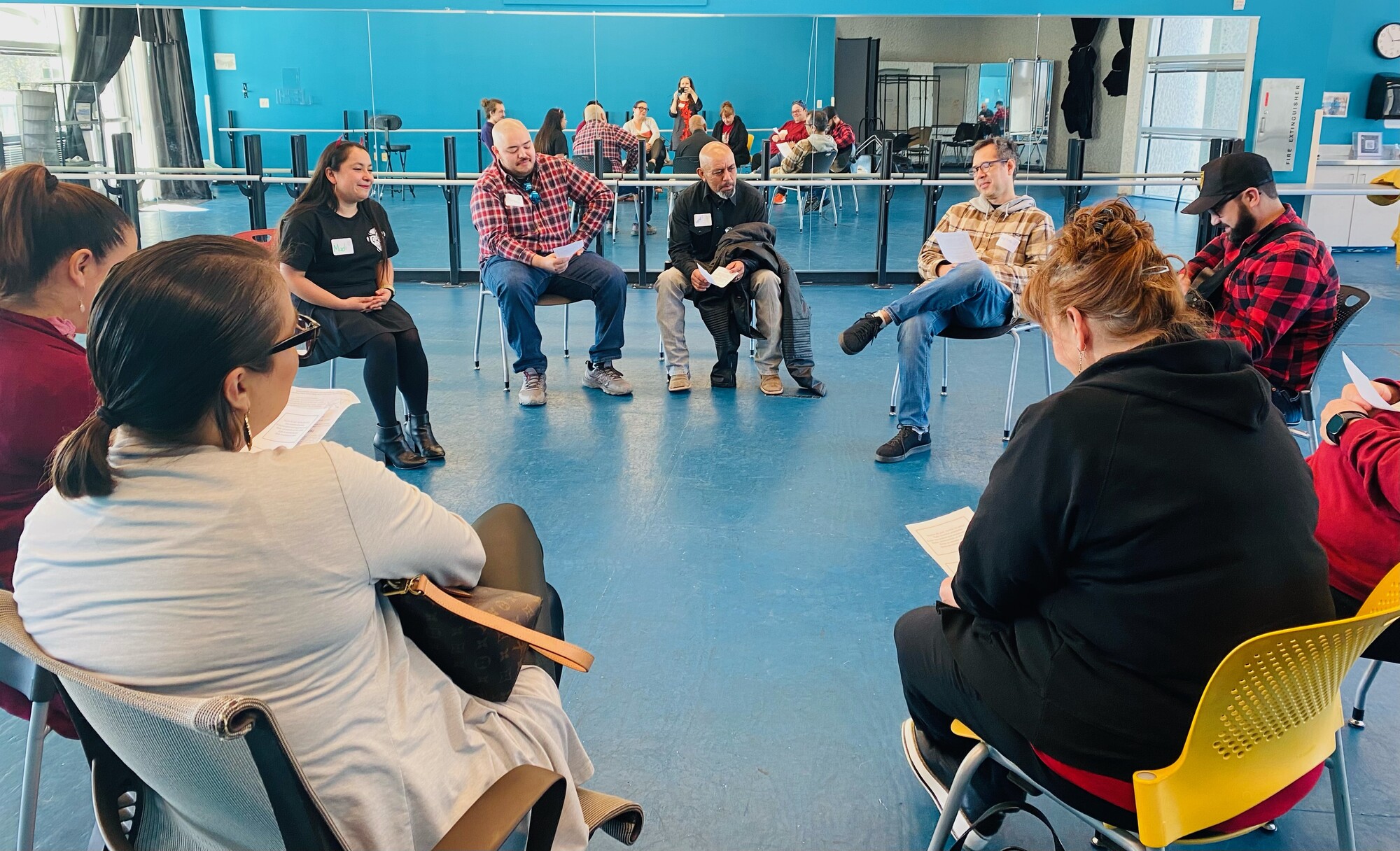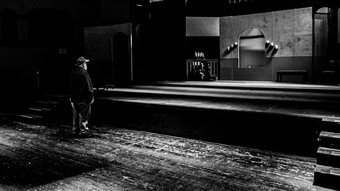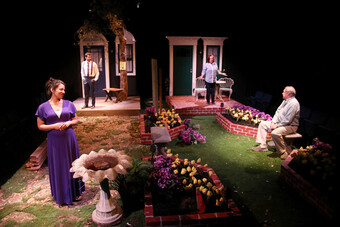I walk into a lobby full of familiar and unfamiliar faces anxiously waiting to be called into the theatre. Every year since 2010, I have either seen or performed in Teatro Vivo’s annual La Pastorela, and while I always appreciate seeing more Latinx stories and bodies on stage, I have found myself yearning for more community engagement. Nonetheless, my friends have told me that this year’s production is unlike anything they’ve ever seen before. As I am getting my ticket, the “receptionist,” Oscar Franco, announces that the house will be opening shortly. Then, a “crew member” bursts through the doors of the theatre and awkwardly proclaims that the cast’s tour bus is stuck in traffic. In confusion and disbelief, I look around to others in the lobby for answers, but the reality of the situation becomes clear: I won’t get to see the play anytime soon. Before I have the chance to ask for a refund, though, a “volunteer” working at the concession stand steps forward and suggests that the audience could perform their very own version of La Pastorela this year. After all, many audience members have seen the play multiple times, right?
Versions of La Pastorela are often performed at Christmastime throughout Northern Mexico and the United States, retelling the Catholic story of the birth of baby Jesus. Though there are many adaptations, productions typically relate the journey of los pastores who travel to Belén, or Bethlehem, to offer gifts to their king and his parents, Mary and Joseph. La Pastorela has become an annual tradition in Austin, Texas thanks to Latinx and Indigenous theatre company Teatro Vivo and other teatros that have come before it. Every year, the presentation includes a unique script, musical score, choreography, and sometimes audience participation at the end of the play when los pastores meet baby Jesus. That final offering had always been my favorite part of the play, as it was the first time many of the performers had the opportunity to go up on stage. Those moments reminded me that while the scripted version of La Pastorela was history, its significance to the community was timeless.
What if audiences were responsible for creating their own story based on previous knowledge and experience? What more can be gleaned from an old, tired piece of literature like La Pastorela?
The story of La Pastorela explores hopelessness and perseverance within a community, which is especially relevant now as the world comes out of a pandemic and as communities of color lead social movements that acknowledge and reckon with injustice. On the global level, humanity continues to recover from COVID while also battling environmental issues; on the national level, our communities continue to struggle with immigration issues and racial reckoning; on the local level, Austinites have also had to band together after an unexpected winter storm in February of 2022 left many households without power or running water.
While Teatro Vivo’s production of La Pastorela didn’t engage all of these social issues, it modeled how community collaboration helps us overcome issues and build responsive spaces. In most retellings of La Pastorela, the pastores have to work together to complete their pilgrimage and fight the devils and obstacles along the way. In this production, the audience plays those characters, which helps us recognize our community’s capacity to collectively and creatively solve problems. The story of the pilgrimage to see Baby Jesus on its own is heartwarming, but watching a village unite on that journey and share in the gratification of getting there is truly encouraging and satisfying.













Comments
The article is just the start of the conversation—we want to know what you think about this subject, too! HowlRound is a space for knowledge-sharing, and we welcome spirited, thoughtful, and on-topic dialogue. Find our full comments policy here